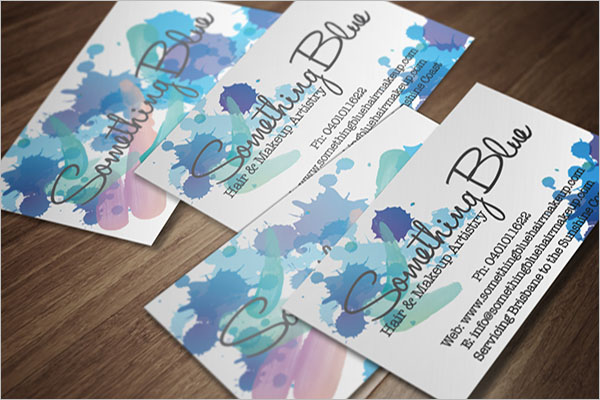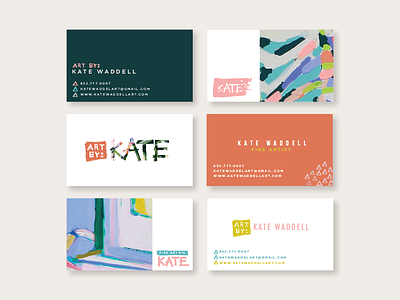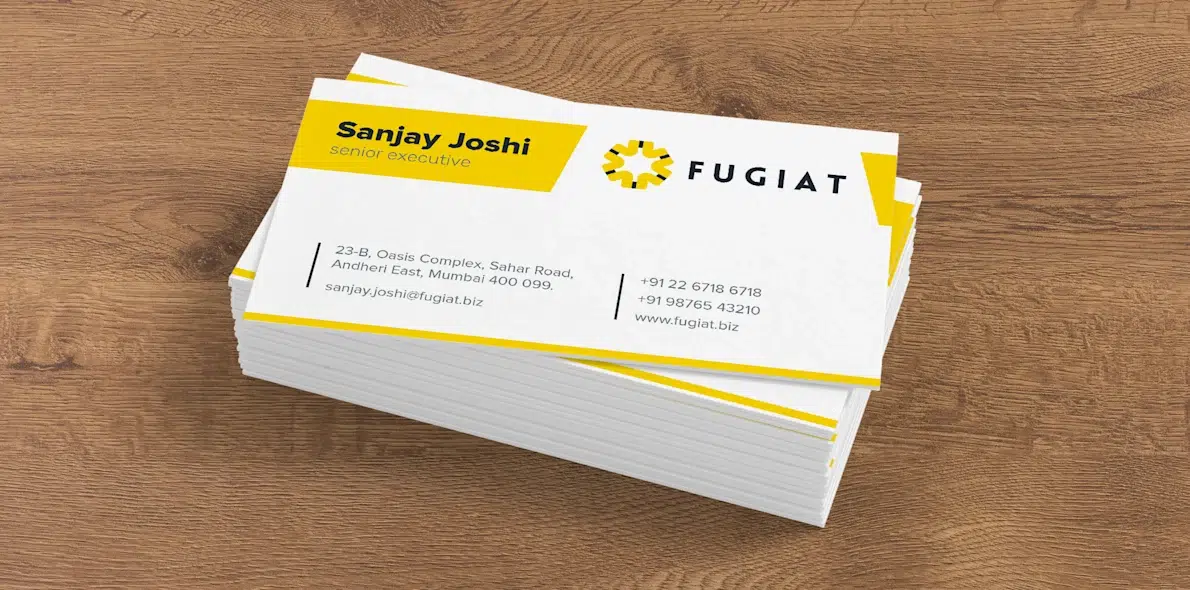Artist Business Card Examples: Crafting Cards that Reflect Your Style and Personality
Are you looking for some artist business card examples to inspire you? Do you want to learn how to design your own artist business cards that reflect your style and personality? If so, you are in the right place.
In this article, we will show you how to create artist business cards that stand out from the crowd and impress your potential clients. We will also provide you with some tips and tricks on how to choose the right elements, showcase your artwork, and optimize your cards for SEO. By the end of this article, you will have artist business card examples that showcase your style and personality.
What are Artist Business Cards and Why Do You Need Them?
Artist business cards are small cards that contain your name, contact information, and a sample of your artwork. They are used to promote your work and brand, and to network with other artists, galleries, and art buyers. Artist business cards are important for several reasons:
- They showcase your talent and creativity. By featuring your artwork on your cards, you can show your potential clients what you can do and what makes you unique.
- They create a visual impact and attract attention. A well-designed artist business card can catch the eye of your target audience and make them curious about your work.
- They communicate your style and personality. Your artist business card is an extension of your brand identity and artistic vision. It can convey your message, values, and emotions through your choice of colors, fonts, shapes, and images.
- They differentiate you from other artists and competitors. In a crowded and competitive market, you need to stand out and be memorable. A distinctive artist business card can help you achieve that and set you apart from the rest.
How to Design Your Artist Business Card
Now that you know what artist business cards are and why you need them, let’s see how to design them. There are some basic elements that you need to include on your cards, such as:
Your name
This is the most important element of your card, as it identifies you and your brand. Make sure your name is clear, legible, and consistent with your other marketing materials.
Your profession
This is where you specify what kind of artist you are and what niche you serve. For example, you can say that you are a painter, a photographer, a graphic designer, or a sculptor. Be as specific as possible to attract the right clients and opportunities.
Your contact information
This is where you provide your phone number, email address, website, and social media handles. Include only the essential and relevant information, and avoid cluttering your card with too many details.
Your logo
This is a graphic element that represents your name or brand. It should be simple, memorable, and distinctive. It should also match your artwork style and theme.
Your artwork
This is the most creative and fun part of your card. You can feature a sample of your artwork on your card to showcase your skills and style. You can use the whole or part of the image, crop it, zoom it, or overlay it with text or graphics. Be creative and experiment with different layouts and effects.
Besides these elements, you also need to consider some general design principles that can help you create a professional and attractive card, such as:
Simplicity
Less is more when it comes to design. Avoid using too many colors, fonts, shapes, or images that can distract from your main message and make your card look busy and chaotic. Stick to a simple and clean design that highlights your name, profession, and artwork.
Consistency
Your card should be consistent with your other marketing materials, such as your website, portfolio, social media, and flyers. Use the same colors, fonts, logo, and artwork style to create a coherent and recognizable brand identity.
Contrast
Contrast is the difference between the light and dark, the big and small, the thick and thin, and the smooth and rough elements of your design. It can help you create visual interest and hierarchy, and make your card more readable and appealing. For example, you can use contrast to emphasize your name, separate your contact information, or highlight your artwork.

Alignment
Alignment is the arrangement and positioning of the elements of your design. It can help you create order and balance, and make your card look neat and organized. For example, you can use alignment to align your text to the left, right, center, or justify it. You can also use alignment to align your logo, artwork, and other graphic elements to the edges, corners, or center of your card.
Balance
Balance is the distribution of the visual weight of the elements of your design. It can help you create harmony and stability, and make your card look pleasing and comfortable. For example, you can use balance to balance the size, shape, color, and position of your elements, and avoid making your card look too heavy or too light on one side.
How to Showcase Your Artwork on Your Business Card
One of the main advantages of artist business cards is that you can showcase your artwork on them. This can help you:
Show your talent and creativity
By featuring your artwork on your cards, you can show your potential clients what you can do and what makes you unique.
Create a visual impact and attract attention
A well-designed artist business card can catch the eye of your target audience and make them curious about your work.
Communicate your style and personality
Your artist business card is an extension of your brand identity and artistic vision. It can convey your message, values, and emotions through your choice of colors, fonts, shapes, and images.
Differentiate you from other artists and competitors
In a crowded and competitive market, you need to stand out and be memorable. A distinctive artist business card can help you achieve that and set you apart from the rest.
But how do you choose and display your artwork on your card? Here are some guidelines to follow:
- Choose a piece of artwork that is relevant to your niche and target audience. For example, if you are a wildlife photographer, you can choose a photo of an animal that you have captured in a stunning way. If you are a graphic designer, you can choose a logo or a poster that you have created for a client or a project.
- Use high-quality images that are clear and crisp, and that fit the size and shape of your card. Avoid using low-resolution or blurry images that can make your card look unprofessional and cheap. Also, avoid using images that are too big or too small for your card, as they can distort or crop your artwork and ruin its effect.
- Consider the layout and orientation of your card, and how your artwork will fit and interact with the other elements. For example, if your card is horizontal, you can use a landscape-oriented image that covers the whole or half of the card. If your card is vertical, you can use a portrait-oriented image that covers the top or bottom of the card. You can also use a square or a circular image that fits in the center or the corner of the card.
- Experiment with different ways of featuring your artwork, such as using the whole or part of the image, cropping, zooming, or overlaying text or graphics. Be creative and try different combinations and effects to find the best way to showcase your artwork and make it stand out.
Artist Business Card Examples to Inspire You
If you need some inspiration and ideas for creating your own artist business cards, here are some examples of artist business cards that showcase different styles and personalities:
- Create a sleek and minimalistic photographer’s business card featuring a black-and-white image and a clean, simple font.
- A vibrant and lively business card designed for a graphic designer featuring a geometric pattern and bold font.
- Create a painter’s business card with a rustic and charming aesthetic, incorporating textured paper and a handwritten font.
Design a contemporary and stylish business card for a digital artist, incorporating a holographic effect and a futuristic font.
For each example, you can see what makes it effective and appealing, and how it reflects the artist’s style and personality. You can also explore more artist business card examples online and get inspired by the variety and creativity of other artists.
Conclusion
Creating artist business cards that showcase your style and personality is not only fun but also beneficial for your art career. By following the tips and tricks we have shared in this article, you can design your own artist business cards that stand out from the crowd and impress your potential clients.
If you need some professional help with creating your artist business cards, you can contact us at OnextDigital. We are a digital agency that offers a range of services, including web development, mobile app development, UX/UI design, and white label software service. We can help you create a stunning online portfolio, a user-friendly mobile app, a custom-made logo, and a high-quality business card that showcase your style and personality. Besides, we have a team of experts who can work with you to understand your needs and goals, and deliver the best solutions for your art business. Whether you are a beginner or an established artist, we can help you take your art career to the next level. Contact us today and get a free consultation. We look forward to hearing from you!






